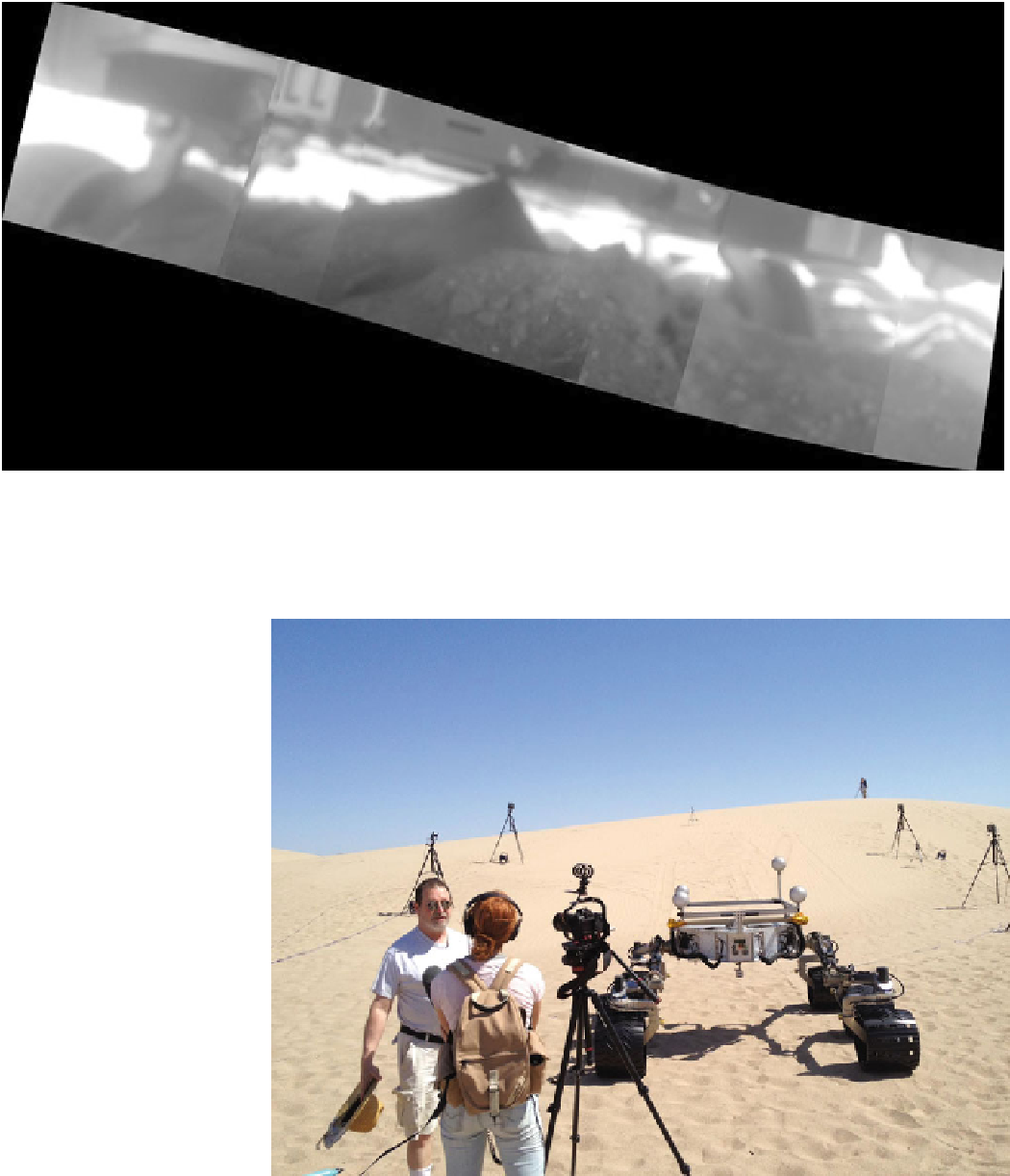Geoscience Reference
In-Depth Information
Fig. 22.14
A mosaic of images from the articulated imager on the Spirit rover, showing the underside of the vehicle. A largely-buried wheel
can be seen at the left edge and another towards the right of the image. Most problematic, however, is the sharp rock in the middle upon which the
vehicle appears to have high-centered. Image credit NASA/JPL-Caltech
Fig. 22.15
Michael Malin, left,
a prominent Mars scientist,
comments to a news reporter
during tests of the 'Scarecrow'
rover on Dumont Dunes in
California's Mojave Desert in
May 2012 to determine its
performance in driving up
various slopes on windward and
downwind portions of dunes.
This is a stripped-down mobility
test rover, designed to have the
same weight on Earth as the full
Curiosity rover has on Mars.
Image credit NASA/JPL-Caltech
successive camera images (i.e., visual odometry—see Bie-
siadecki and Maimone 2006). This allows autonomous
detection of excess wheel slippage, allowing the vehicle to
stop itself before it goes too far into a hazardous spot. For
example, on sol 603, 5 m of blind driving made 4 m of
progress before the visual odometry software detected 44 %
wheel slip. The vehicle had made a shallow approach onto a
ripple, resulting in all six wheels sitting on loose sediment
(Fig.
22.11
) but it took only one day to recover from this by
turning and backing out.

Search WWH ::

Custom Search